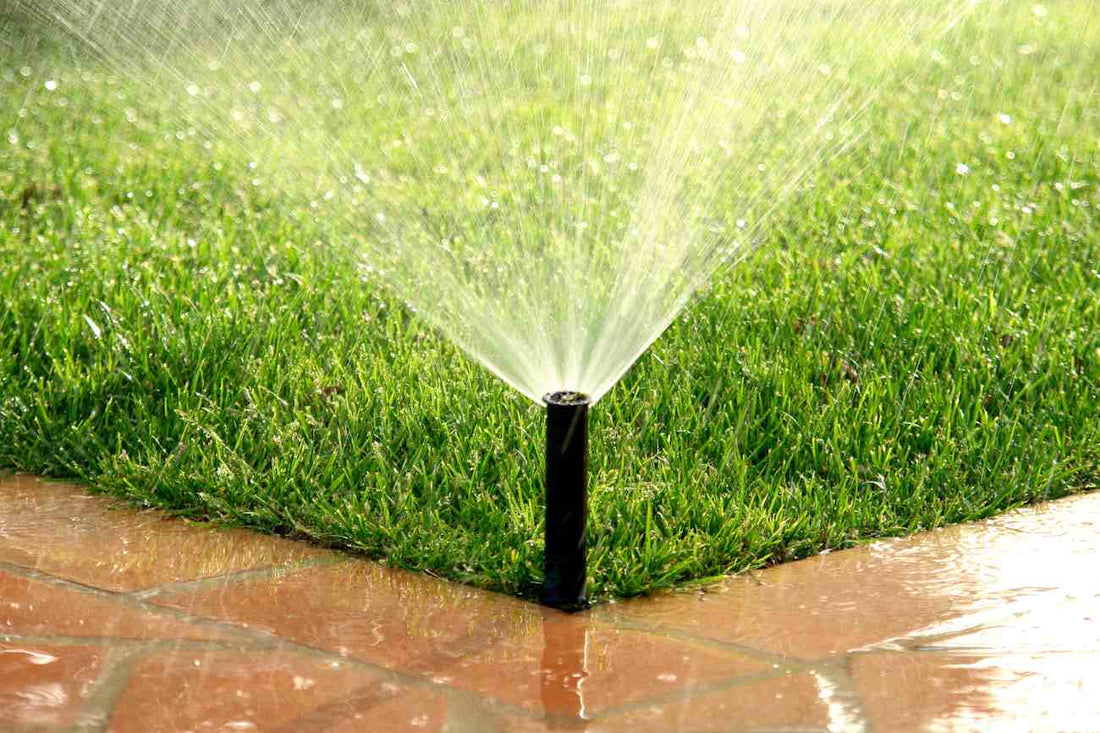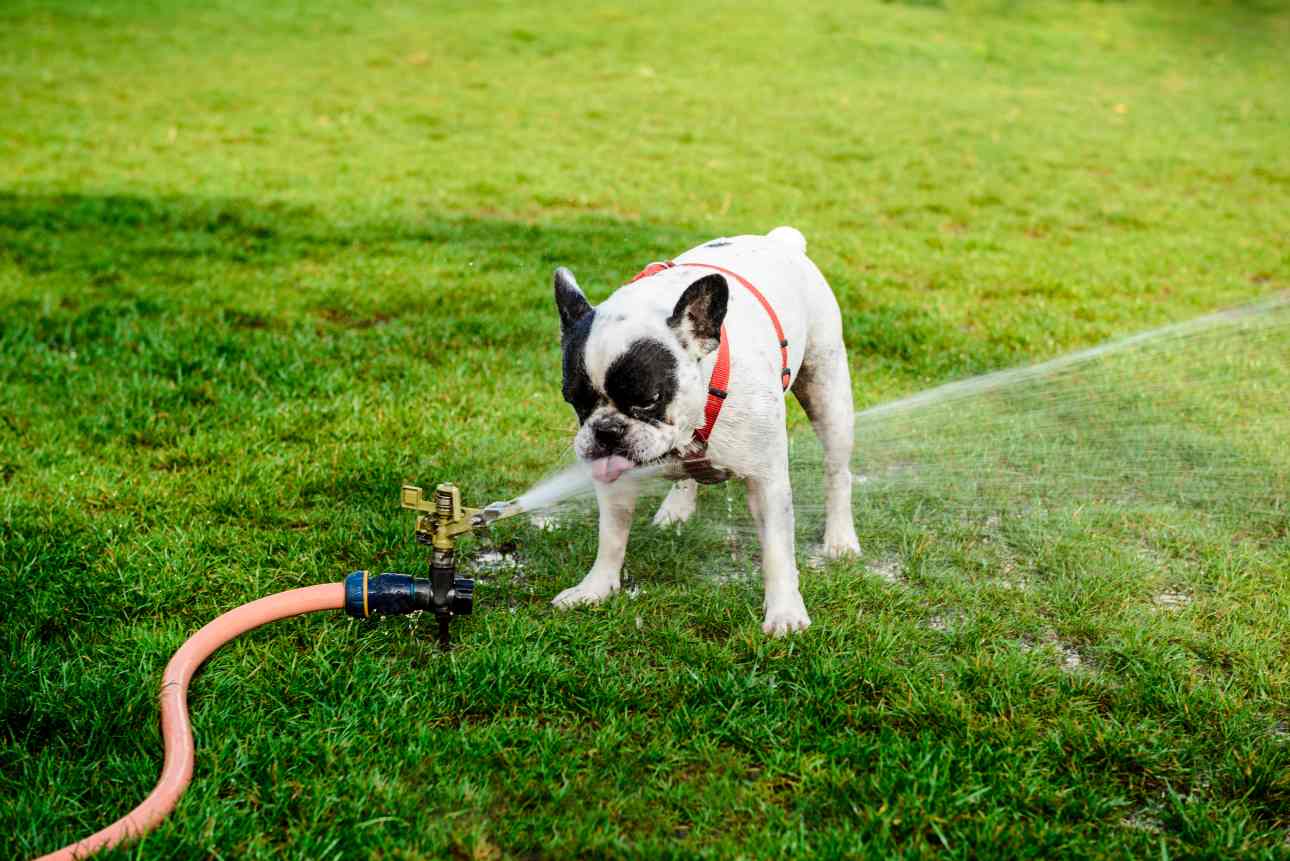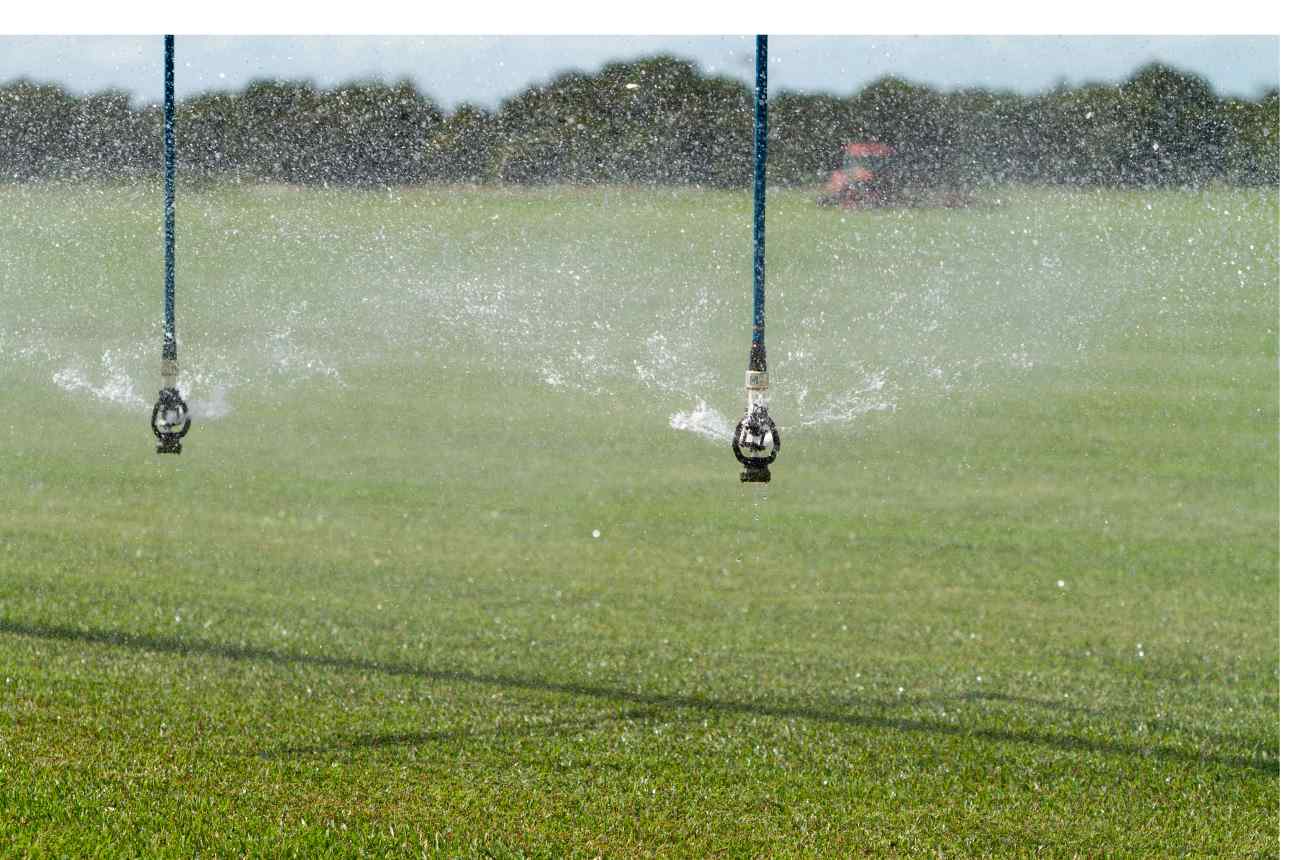
How to Water Your Lawn in Hot Weather
Jamie TedderLawns can suffer significantly from the intense heat and relentless sunlight during hot weather, enduring considerable stress that can leave them looking lackluster, parched, and sparse.
In these challenging conditions, you can benefit from reevaluating your lawn care routine to maintain a healthy, green lawn. Refresh your knowledge of the best watering practices and make necessary adjustments to adapt to the prevailing weather conditions, helping your lawn withstand the rigors of hot weather and stay lush and vibrant.
When is the Best Time to Water Your Lawn in Hot Weather?
Understanding how long, how often, and how much to water your grass is essential for efficient water use, particularly in hot weather or when water restrictions are in place. It's important that your grass receives enough water without waste, helping it stay resilient to pests and diseases.
The best time to water is early morning, preferably before 9 am, when there is less wind and sun. This timing helps reduce evaporation, allowing the water to penetrate the soil deeply and reach the roots. It also allows the foliage time to dry, minimizing risks of fungal disease.
The second-best time is around 6 pm. However, watering your lawn then may not let the water dry off the grass blades properly, increasing the risks of fungal growth. Avoid watering at night when grass stays wet, inviting disease, and during peak daytime heat when evaporation is high.
How Often to Water Your Lawn in Hot Weather
Most warm-season grasses, including Zoysia, St. Augustine, and Bermuda grass, are known for their exceptional heat and drought tolerance. They can thrive with 1 to 1.5 inches of water a week, whether from irrigation or rainfall. Depending on your watering schedule and the needs of your lawn, this requirement can be applied in one session or staggered over multiple sessions.
Watering deeply but less often is recommended as it allows the water to penetrate deeper into the soil, contributing to stronger and deeper roots. A deep root system increases your lawn's drought tolerance, making it more resilient to dry conditions. The key is to ensure your lawn receives the total water needed each week with minimal to no runoff.
During prolonged periods of high heat, grass can quickly lose moisture. Consider increasing the frequency or duration of your watering to replenish the lost moisture and ensure your lawn stays healthy and green, even in the hot weather.

How to Properly Water Newly Installed Sod
While the general recommendation of 1 to 1.5 inches of water per week applies to fully established turf, the approach differs for new sod. For newly laid sod, it's essential to keep the soil moist for at least 14 days to aid in its establishment and encourage root growth. During this period, the sod is regrowing and establishing its root system in its new environment, and adequate moisture is crucial for this process.
For the first week after sod installation, you may have to water your lawn twice daily to keep the soil moist. Gradually taper down the frequency and increase the duration of your watering sessions to help transition to the 1-inch-per-week after the initial 14 days. This approach helps ensure that the new sod receives sufficient moisture for root establishment without becoming waterlogged.
Are You Watering Your Lawn Too Much or Too Little?
In an effort to keep your lawn hydrated during hot weather, it's easy to overwater inadvertently. However, this mistake can be just as damaging as not watering enough. Overwatering can lead to various issues, including root rot, nutrient leaching, and increased disease susceptibility.
Puddles that linger on your lawn without draining fast enough can indicate that your lawn is either compacted or o verly saturated. Other signs of overwatering include the presence of fungi and mushrooms, grass that feels squishy on the foot, yellowing grass, and an increase in weeds and pests. If you see any of these signs, cut back on your watering to avoid further damage to your lawn.
On the other hand, if your lawn struggles to maintain its health, it may be a sign that it's not receiving enough water. Signs of insufficient watering include grass that appears yellow, brown, or gray. Additionally, footprints that remain visible and do not bounce back can indicate that the grass lacks enough moisture to support its structure. The grass may also feel dry and crispy to the touch. In extreme cases, the grass may enter a state of dormancy, exhibiting slow or no growth as a survival mechanism. If you observe these signs, adjust your watering schedule to ensure your lawn receives adequate moisture for optimal health.

About Bethel Farms
Bethel Farms is a trusted, family-owned sod farm in Central Florida, providing a diverse selection of high-quality warm-season grass for sale, ideal for sod installation. Sod delivers various benefits, primarily an almost-instant coverage, transforming your outdoor space into a beautiful landscape. It establishes a strong, durable lawn that is more resistant to heat and drought, making it an excellent option for anyone looking to improve their lawn quickly and effectively.
In addition to sod, we also offer SodPods® grass plugs and NutriPod® grass plug fertilizer for a comprehensive lawn care solution.
Visit our website to explore our full range of lawn care products.

